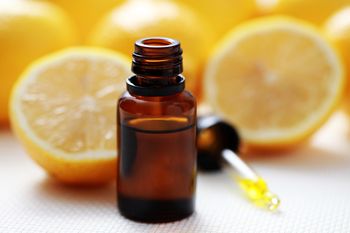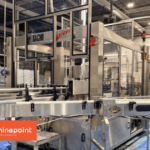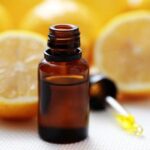In the extraction process of oranges and tangerines, part of the essential bark oil gets into juice occasionally reaching values above 800 ppm. These values vary depending on the type of extraction line used and the fruit size, with especially high values found in tangerine juice extracting.
To reduce the oil content in the juice we put the liquid through an evaporation process in a vacuum, and at set temperature conditions whilst pasteurizing. This facilitates the evaporation of the majority of the oil.
The gases resulting from this evaporation process are condensed and subsequently distillated to separate the water from the oil. The water is pumped back into the juice mixture to avoid loss of process performance.
Unlocking the Potential: Machine Point offers top-notch machinery for efficient essential oil distillation in the citrics industry
MachinePoint delivers distillation lines for capacities of 6,000, 12,000 and 30,000 liters per hour. Lines for other capacities can be built upon request. Distillation systems are integrated into the sterilizer or can be provided as a fully independent control unit.
The oil obtained from our distillation lines appear colorless as they are drawn out in the right conditions. In other distillation processes, with poor conditions, the oil gets polluted with juice components and takes on a murky colour.
The uses of these oils are well known, they can be used in a wide variety of industrial and pharmaceutical fields.
Other features of our essential oil distillation systems are:
- High Vacuum Operation
- Vacuum pump liquid ring
- Tubular gas condenser
- Proportional level control evaporation chamber
- Siemens S7 Automation
- Optional HMI touch screen with graphics performance
- Pump with speed control
- Removal of condensate through a valve system (without pump)
- Oil below below 200 ppm
Used high-quality machinery at MachinePoint
The distiller is designed to integrate directly into the existing sterilization process, providing a compact and efficient solution for extracting citrus essential oils. Below, its operation and main components are described:
- Integration into the sterilizer: The distillation system is fully integrated into the sterilizer, leveraging the infrastructure and energy used in the sterilization process.
- Loading containers: Citrus peels are placed in the sterilizer’s loading containers, where they undergo a prior sterilization process before the extraction of essential oils.
- Steam generation: The sterilizer generates high-temperature steam, which is used both to sterilize the citrus peels and to initiate the extraction process of essential oils.
- Extraction chamber: After sterilization, the citrus peels are transferred to the extraction chamber, where they undergo a steam distillation process to extract the essential oils.
- Integrated condenser: The steam containing the essential oils is cooled and condensed in an integrated condenser in the sterilizer, thus separating the essential oils from the steam and water.
- Separation and collection: Once condensed, the essential oils are separated from the water and collected in specific collection containers within the sterilizer.
- Process control: The entire distillation process is automatically controlled and monitored by an integrated control system in the sterilizer, ensuring optimal conditions of temperature, pressure, and extraction time.
Frequently asked questions about citrus essential oil distillation
Citrus essential oil distillation allows for the production of natural and concentrated products with aromatic and therapeutic properties. These oils can be used in the fragrance, cosmetics, aromatherapy, and cleaning product industries, among others.
In the distillation process, citrus peels are heated in water, releasing the essential oils. The resulting vapor is condensed and separated, leaving a concentrated liquid containing the essential oils.
Varieties such as oranges, lemons, limes, grapefruits, and mandarins are commonly used for essential oil distillation due to their high oil content in the peels.
Yes, specialized equipment such as steam distillers, condensers, phase separators, and collection vessels are required to carry out the citrus essential oil distillation process.
The yield of citrus essential oil distillation can vary depending on factors such as the citrus variety used, distillation conditions, and equipment quality. A yield of essential oil ranging between 0.5% and 2% of the total weight of the peels can be expected.





